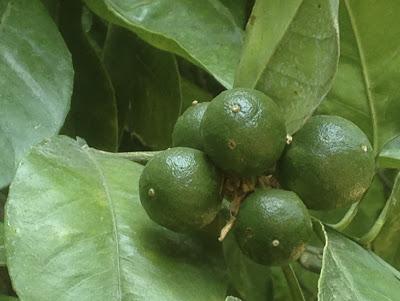
The young green fruits of Citrus X aurantium
January and early February are the traditional marmalade-making months in Britain. This is because Seville oranges are available in the shops during this very brief period. The Seville, or the bitter orange (Citrus x aurantium) appears to be a hybrid between the pomelo (Citrus maxima (Burm.) Merr.) and the wild mandarin (Citrus reticulata Blanco). Although in England it is known as the Seville orange, the bitter orange is grown all over the Mediterranean and throughout Asia. In the medieval and early modern period, this bitter fruit was probably the only orange known in the West. It was introduced from Asia into Southern Spain and the wider Mediterranean by the Arabs. The sweet orange did not appear in Europe until the early seventeenth century when it was brought to Lisbon from China by Portuguese plant collectors. In seventeenth century English cookery books these new sweet fleshed oranges were therefore known as either 'Portugals' or China oranges. In Greece, the name 'Portugals' - πορτοκαλία - is still used.Now, what interests me is this. I have said that the Seville orange season nowadays occupies a brief window in January and February. So how can the eighteenth century invoiced receipt below, which I came across in the archives of Arley Hall in Cheshire, be explained? It is a receipt for the sale of lemons, Cheanay oranges (sic), Sivill oranges (sic) and isinglass to Sir Peter Warburton, the owner of Arley Hall, by the Manchester grocer Mrs Elizabeth Raffald. The receipt is dated 29th May 1771. This would indicate that Seville oranges had a longer season back in the eighteenth century than they apparently do now. 29th May is well on from January and February. It could be that Mrs Raffald had the skill to keep her stock fresh for over three months, or Seville oranges were still being imported from Spain to Manchester in early summer, probably via Liverpool.
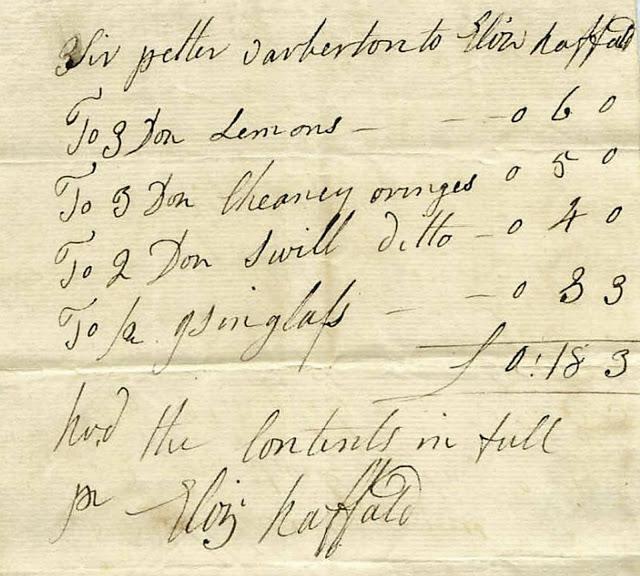
An invoiced receipt for citrus fruit in the hand of Mrs Elizabeth Raffald, who ran various grocery and confectionery shops in Manchester in the second half of the eighteenth century. Raffald was the author of the most original cookery book of the eighteenth century, The Experienced English Housekeeper (Manchester: 1769). She had worked as Sir Peter Warburton's housekeeper until her marriage in 17Photograph © Arley Hall Archives.
I was in Southern Spain recently in early June and noted that there were a few trees in the Seville area that were still bearing small numbers of bitter oranges. In some upland towns like Ronda, where the season is somewhat later, there were trees which were still heavily laden. So it is therefore theoretically possible that Seville oranges were being imported into England in the eighteenth century very late in the season, as Mrs Raffald's receipt would appear to suggest.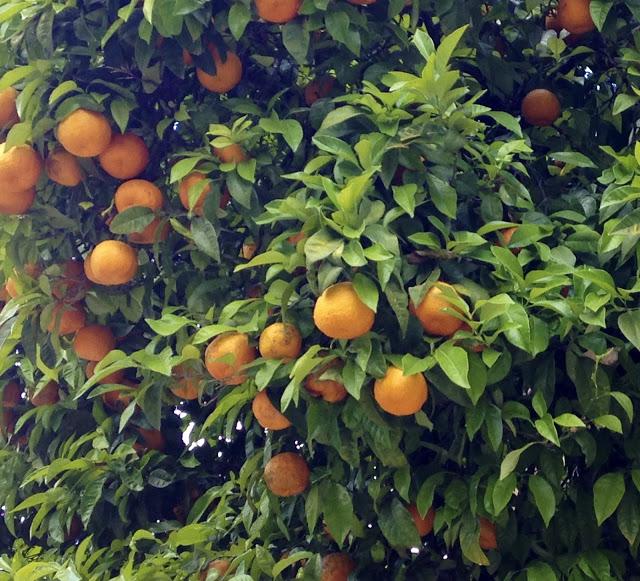
Seville oranges in Ronda on 6th June 2013
As well as the mature oranges, the trees I examined also bore small young green embryonic fruit. In Asia, mature bitter oranges (such as Japanese dai dai) stay on the tree for up to four years and actually go green again in the hot weather. While I was in Andalusia I collected a lot of small green baby Seville oranges and lemons on a friend's farm as I wanted to try out the recipe below for a sweetmeat from The Lady's Companion (London: 1751). I first came across the practice of preserving immature green bitter oranges in the 1970s when I lived on Crete. A friend of mine in Athens sends me some of her own homemade ones every year. They are superb. In eighteenth century England, many wealthy estates had orangeries and it is likely that in poor years they had large number of immature fruit to deal with. I suspect that this was the Georgian equivalent of that common modern recipe for making use of green tomatoes at the end of a cold, sunless English summer - the ubiquitous green tomato chutney. However baby green oranges and immature lemons in syrup are much more interesting.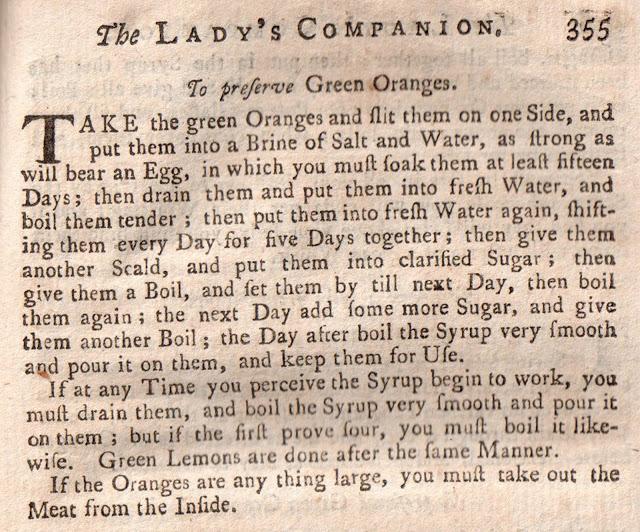
This recipe from The Lady's Companion (London: 1751). was reprinted in Hannah Glasse, The Complete Confectioner (London: 1770). Glasse also used this book as the source for many recipes in her earlier work The Art of Cookery made Plain and Easy (London: 1747).
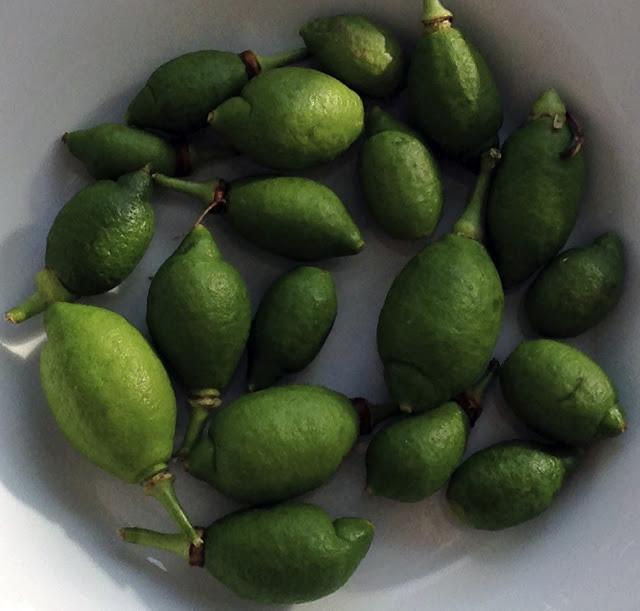
Small, fragrant baby lemons.
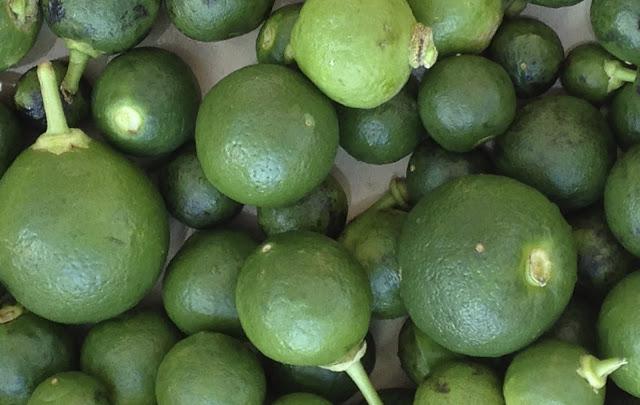
Small highly fragrant, but intensely bitter baby Seville oranges
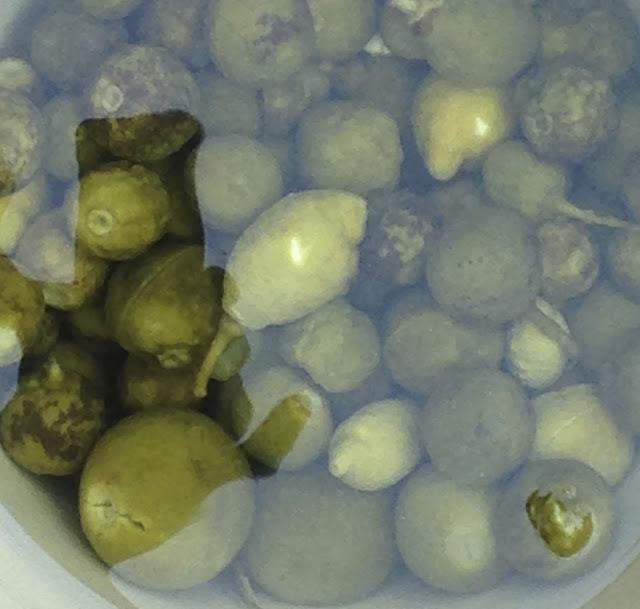
The baby oranges and lemons are soaked in a strong brine for fifteen days to remove the bitterness. They are then washed in fresh water every day for five days to get rid of the salt. They are then preserved in sugar syrup.
I have completed the process of brining the oranges and have also washed them for five days in fresh water, changing it every day. Today, I made a stock syrup with a liter of water and a kilo of white sugar and have started the process of preserving the fruit in the syrup. I will post a photograph of the finished article in a future article about the wider issue of preserved and candied citrus peels.